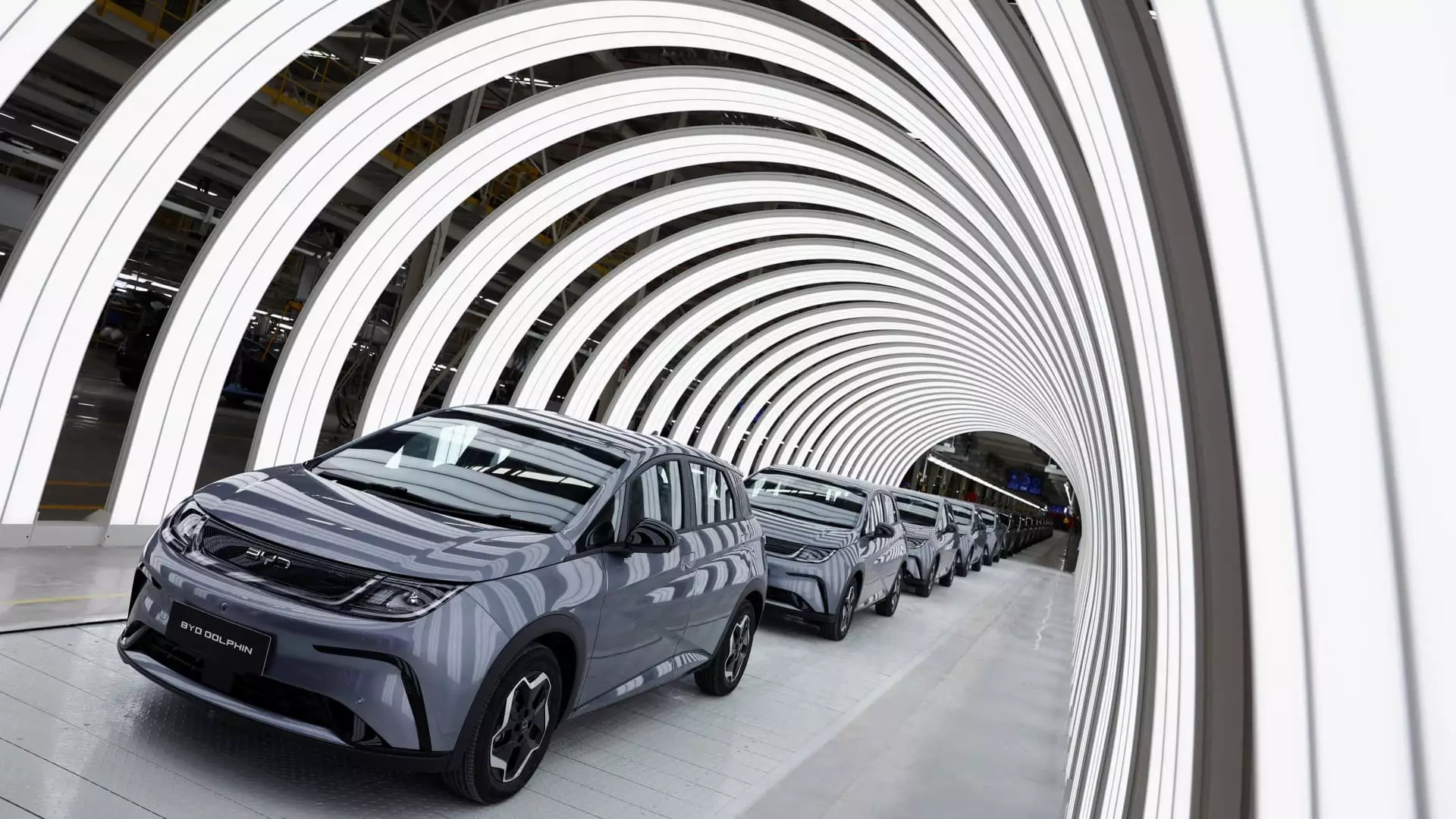The automotive landscape is undergoing a seismic shift, led by electric vehicle (EV) manufacturers like BYD (Build Your Dreams). As the company intensifies its focus on advanced driver-assistance systems (ADAS), market analysts are predicting a ripple effect that will positively influence its suppliers and shape the landscape of the entire automotive industry. Recently, BYD unveiled a driver-assistance system compatible with several of its vehicles, including cost-effective options priced below 70,000 yuan (approximately $9,600). This strategic move not only marked a significant milestone for BYD but also propelled its stock shares to record highs, underscoring investor confidence in the company’s trajectory.
Integrating AI for Enhanced Driving Experiences
BYD’s integration of artificial intelligence capabilities from the company DeepSeek is a crucial aspect of its new driver-assist system. Analysts from Nomura have highlighted this development as a catalyst for growth among companies supplying parts for BYD’s ADAS. They indicated that as more automakers strive to enhance their smart driving features, there will likely be increased demand for components critical to these technologies. This future-oriented perspective is pivotal, as it showcases BYD’s ambition and invites competitors to accelerate their technological evolution in a bid for market relevance.
In a fiercely competitive market, driver-assistance features are becoming increasingly vital for attracting consumers. Tesla, often viewed as a trailblazer in EV technology, has faced its share of challenges, particularly concerning regulatory approvals for its Full Self-Driving feature in China. Following BYD’s recent announcements, Tesla’s shares experienced a sharp decline, reflecting market dynamics where advancements by competitors can swiftly alter investor sentiment. This aspect of competition emphasizes the immediacy with which technological innovations can disrupt existing market hierarchies.
A closer examination reveals that the success of BYD’s driver-assistance systems heavily relies on a robust supply chain. Central to this ecosystem is Horizon Robotics, a key chip supplier based in Beijing, and pioneers in the smart driving chip sector. The attention from prominent analysts such as Goldman Sachs, who raised their price target for Horizon Robotics based on anticipated growth, signals confidence in the company’s strategic alignment with BYD’s vision. These relationships not only spotlight the importance of semiconductors in electric vehicles but also underscore an emergent trend in the supply chain dynamics of the automotive industry.
The financial outlook for companies involved in the development and supply of driver-assistance systems appears promising. Analysts expect that BYD will see more than three million vehicles equipped with advanced driver-assistance technologies in the current year. Such projections offer a clearer picture of the potential revenues for suppliers like BYD Electronics, which specializes in manufacturing components that enhance BYD’s driver-assistance capabilities. With price points varying depending on the system tier, the financial implications for BYD Electronics are notable, suggesting that higher-cost components could lead to improved revenue generation.
BYD’s driver-assistance systems, branded as “Dipilot,” employ varying technologies based on their pricing structures. Nomura’s research has outlined that basic configurations utilize chipsets from Horizon Robotics coupled with Nvidia’s Orin chips, while more sophisticated models lean more heavily on Nvidia’s technology. Notably, advanced configurations that facilitate city driving rely on lidar technology from firms such as Hesai. Lidar, which stands for Light Detection and Ranging, is crucial for constructing 3D maps of a vehicle’s surroundings—essentially the eyes of an autonomous vehicle.
As domestic initiatives in China push for technological self-reliance and decouple from U.S.-based influences, by facilitating the development of a robust _homegrown_ ecosystem, BYD’s strides in driver-assistance technologies are timely and strategically positioned. As the demand for smart driving components rises, firms like Hesai Tech, despite facing regulatory scrutiny in the U.S., are likely to benefit from increased demand driven by BYD’s innovations. This evolving narrative in the EV market signals not just an opportunity for individual companies, but also a potential reconfiguration of the industry, shaping how technological advancements can redefine consumer experiences and operational dynamics in the automotive sector.
BYD’s pivot towards advanced driver-assistance systems is reshaping the competitive landscape of the electric vehicle market. With the integration of AI and reliance on innovative suppliers, the implications extend beyond mere profit margins, hinting at a future where technology and consumer expectations constantly evolve in tandem. The journey forward for BYD and its stakeholders will undoubtedly be watched closely, as it represents a vital intersection of technology, automotive engineering, and market stratagem that could define the next chapter in the history of transportation.

